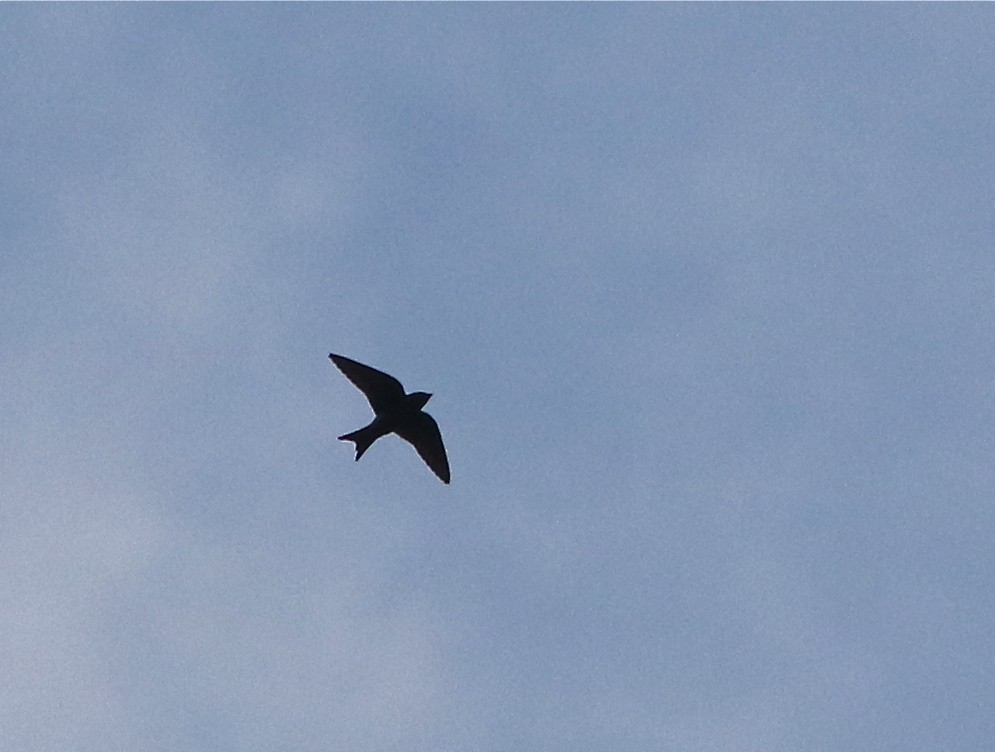Cuban Martin
A species of New world martins Scientific name : Progne cryptoleuca Genus : New world martins
Cuban Martin, A species of New world martins
Botanical name: Progne cryptoleuca
Genus: New world martins
Content
Description General Info
 Photo By Don Roberson
Photo By Don Roberson Description
Adult Cuban martins are 18.5 cm in length, with a forked tail and relatively broad wings, and weigh 40 g. Adult males are a glossy blue-black with contrasting white lower underparts. Females and juveniles are duller than the male, with grey-brown breast and flanks and white lower underparts. Adult male Cuban martins can be distinguished from adult male Caribbean martins by their dark bellies: Caribbean martins have a prominent white patch on theirs. Adult females and immatures aren't as easily distinguished. On the other hand, adult male Cuban martins and Purple martins cannot be reliably distinguished in the field. Adult female and immature Purple martins have a scaly breast pattern which can be used to distinguish the two species. Unlike these two similar species, the Cuban martin is endemic to Cuba and Isla de la Juventud. Purple martins and Caribbean martins are migratory species that are only present in the Cuban martin's range during winter. 
Size
19 cm
Nest Placement
Cavity
Feeding Habits
Cuban Martin preys mainly on beetles, heteropteran bugs, and dragonflies (Odonata). Its foraging strategy involves aerial hunting during flight. Notable for its specialized feeding techniques, cuban Martin exhibits a preference for these specific insect types.
Habitat
Semi-open areas, especially near water and along coast, scrub, farmland, mangroves, human habitations
Dite type
Insectivorous
General Info
Feeding Habits
Bird food type
Bird Feeder Type

Platform
Behavior
The Cuban martin nests in cavities in banks and buildings, or old woodpecker holes. 3-6 eggs are laid in the lined nest, and incubated for 15 days, with another 26-27 to fledging. Just as the purple martin, this species may compete with other passerines for nesting cavities. In particular, the main foe is the house sparrow in urban areas, where they mostly use man-made structures, whereas in more rural locations Picidae holes in coconut trees are favored, and there is less competition with the sparrows. Cuban martins are gregarious birds which hunt for insects in flight. They are often found in large, sometimes mixed flocks of up to 20 birds. Their call is a gurgly chew-chew. Despite being considered endemic to Cuba and Isla de la Juventud, occasional vagrant individuals have been reported in Florida. 

 Photo By Don Roberson
Photo By Don Roberson Scientific Classification
Phylum
Chordates Class
Birds Order
Perching birds Family
Swallows Genus
New world martins Species
Cuban Martin